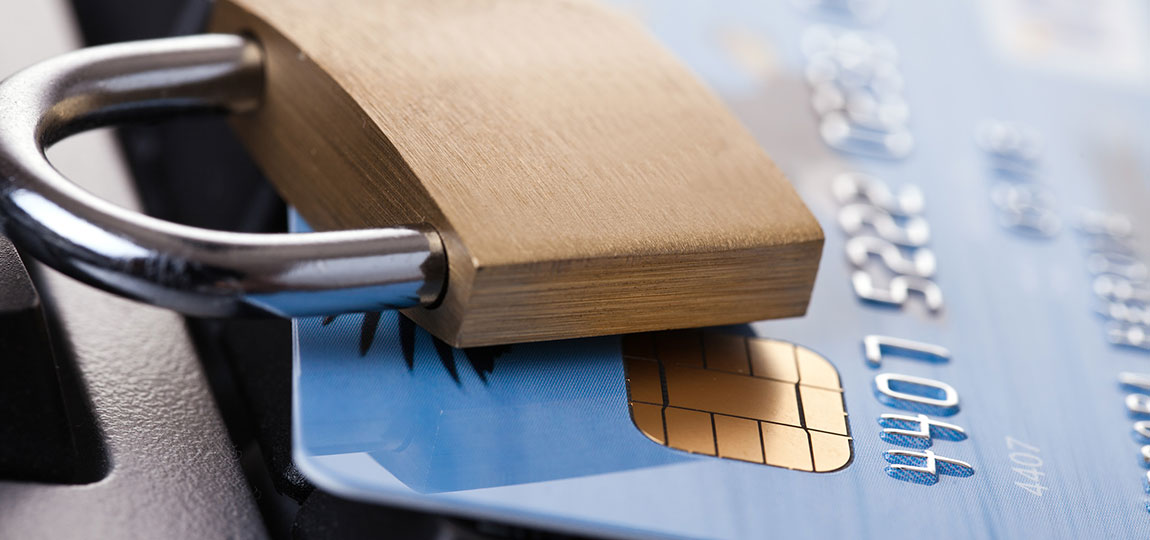Chances are, you know someone who’s been a victim of fraud. Maybe you’ve even fallen victim yourself. With daily stories about credit card fraud and identity theft hitting the news, consumers need to be proactive about protecting themselves from fraudulent activity.
One type of fraud to stay extra cautious about is debit card fraud. With debit cards, the stakes are higher than with a credit card. If a thief gets his hands on your card information as well as your PIN, your entire bank account could be drained in minutes. And Federal law doesn’t protect debit cards to the same degree as credit cards. If you notify the bank within two days of discovering a lost or stolen card, the most you will be liable for in terms of fraud is $50. After two days however, your liability can jump to as much as $500, and after 60 days you could be liable for all of the fraudulent activity, depending on your financial institution.
So what is a debit card user to do? Luckily there are steps you can take to protect yourself, and your bank account from fraudsters looking to steal your financial information.
Beware of card skimmers. You’ve probably heard about card skimmers in the news, and unfortunately they’re becoming more and more prevalent. These are devices that criminals install over the legitimate card readers at ATMs and point-of-sale terminals like gas pumps and self-service store checkout lanes. When you insert your card into the reader, the skimmer captures the card information so the crook can access it. Many skimmers look so much like the real thing that they’re difficult to spot, but there are some key things to look out for. A good habit to get into is to look around at the terminals next to you to see what their readers look like. If they look different than the card reader at your terminal, it’s very possible yours is affixed with a skimmer. You should also always check for any signs of tampering, or any aspect of the card reader or keypad that isn’t aligned correctly. And if the color of the reader is different from the color scheme used on the rest of the terminal, it could also be a sign that a skimmer has been installed.
Look who’s watching. It’s not uncommon for crooks to install miniature cameras near ATMs and payment terminals, so that they can watch people enter their PIN numbers. A more low-tech, but equally painful scam involves “shoulder surfing”, where a crook will literally look over your shoulder to obtain your card number and watch as you type in your PIN. One way to protect against this type of intrusion is to shield the front of your card, and cover the keypad with your other hand to block the view of a camera, or anyone nearby, from seeing what you’re typing in.
Don’t put yourself in a vulnerable position. Perhaps one of the easiest, and scariest, ways for a criminal to steal your debit card information is to ambush you at the ATM and demand your card and PIN number. To safeguard against this type of attack, try to conduct ATM transactions during daylight hours. If you do need to use an ATM at night, make sure you pick one that’s in a well-lit area. And if you see someone who looks suspicious lurking near an ATM, don’t use it.
Be wary of helpful strangers. In one type of unsophisticated debit card scam, the perpetrator will insert something into the card reader prior to the victim using it which will cause the card to get stuck in the machine. The crook will commonly offer help by telling the victim that entering their PIN again should get the card out, and they’ll watch closely while the PIN is re-entered. Of course, the card won’t come back out, and when the victim leaves, the criminal uses tools to get the card out of the machine, and walks away with the victim’s card and PIN number. Anytime your card gets stuck in an ATM, forego any offered help from a stranger, and instead immediately notify your financial institution and the owner of the ATM.
Keep close tabs on your account. Use online and mobile banking to check your account balance and card activity at least weekly, and sign up for account alerts if they’re available from your financial institution. These notifications will help keep you up-to-speed on any irregular activity in your account, so you can report it immediately to your financial institution.
Staying alert and being on the lookout for anything amiss is the best line of defense in protecting yourself from debit card fraud. Debit cards can be a convenient tool for helping you to manage and access your money, but it’s also important to know the risks associated with debit card use, and how to minimize them.
